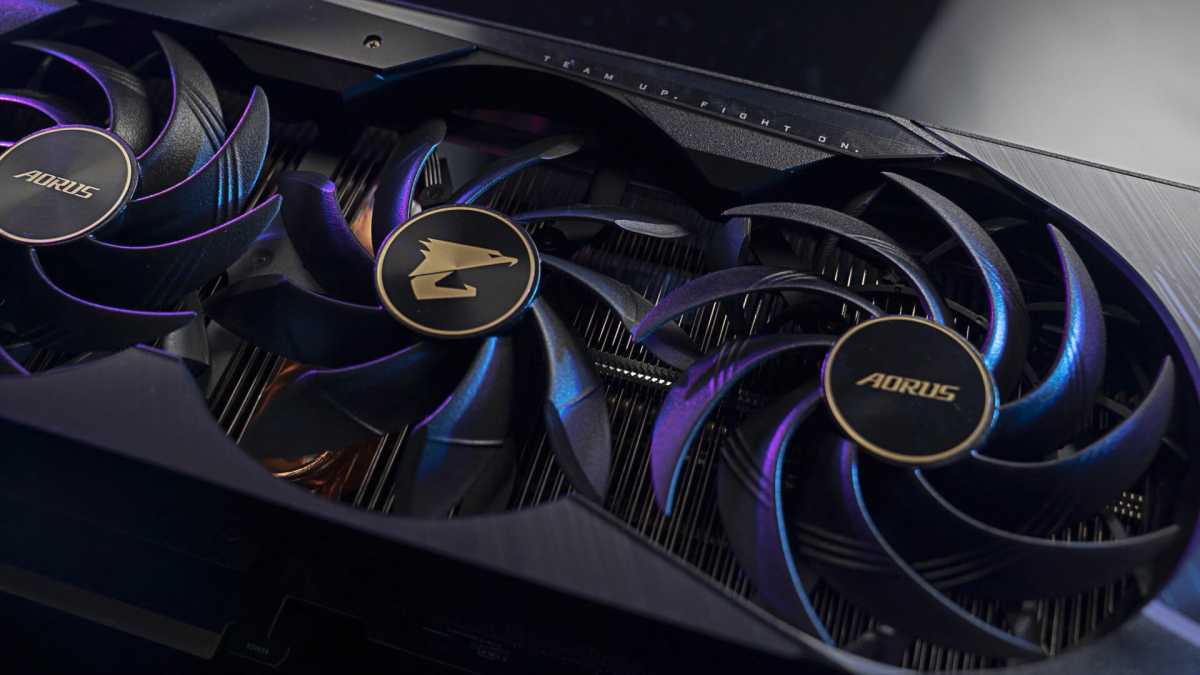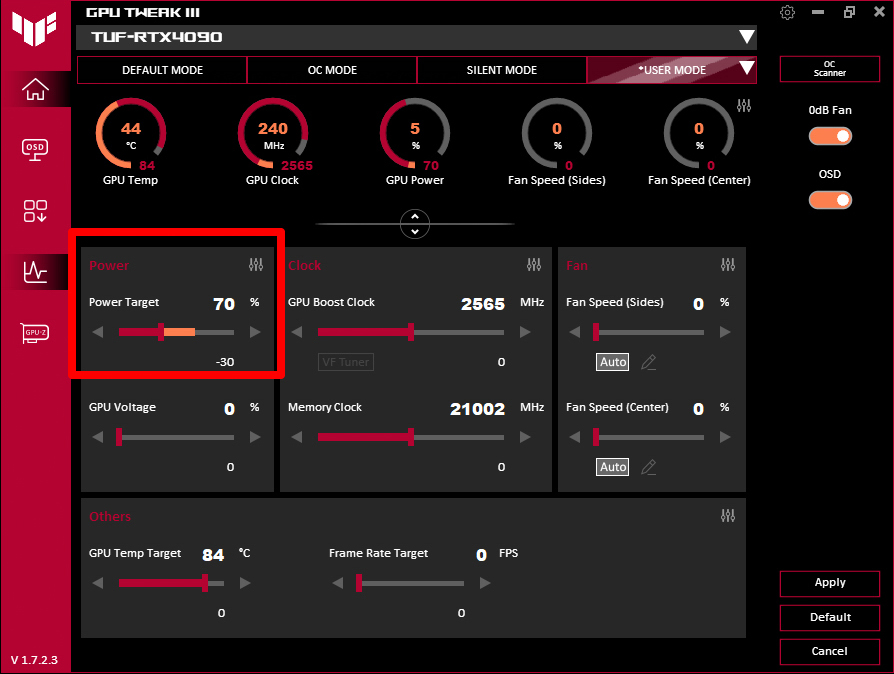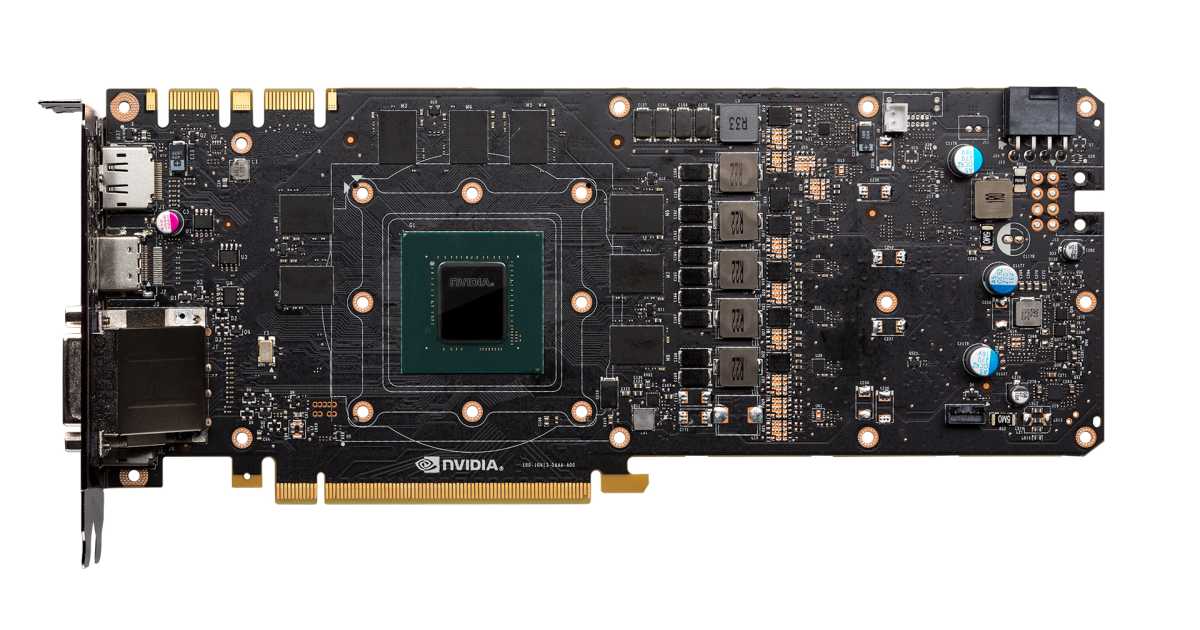How GPU temperatures affect graphics card clock speeds --[Reported by Umva mag]
Each GPU has a maximum temperature set by the manufacturer that is considered safe. As long as the graphics chip operates within these specifications, everything is fine. As soon as temperatures rise, cooling measures begin to take effect. Users often worry about so-called thermal throttling. This is often misunderstood to mean that the graphics card throttles performance if it does not reach the maximum boost clock rate (boost clock). In fact, the base clock is the guaranteed minimum performance that the GPU achieves under load as long as it is within the safe temperature range. Further reading: 4 things to consider before buying a GPU Many PC users are concerned about the temperatures of their GPU. However, thanks to good fans like this one from Aorus and smart features, this is usually not necessary. Many PC users are concerned about the temperatures of their GPU. However, thanks to good fans like this one from Aorus and smart features, this is usually not necessary. Aorus Many PC users are concerned about the temperatures of their GPU. However, thanks to good fans like this one from Aorus and smart features, this is usually not necessary. Aorus Aorus The boost clock, on the other hand, is the maximum speed that the graphics chip can achieve when sufficient power and cooling are available. Throttling only occurs when the graphics card reduces the speed below the base clock in order to bring the temperature into the safe range. In gaming, the graphics processor is normally less heavily loaded than in professional rendering or calculation tasks. This is because there are many moments during gaming when the GPU is under less strain and can cool down. As long as the GPU does not fall below the base clock and the boost clock remains stable, there is no reason to worry. Similar rules apply to the idle temperature. Further reading: Help! My graphics cards fans aren’t spinning. How do I fix it? As a rule, the idle temperature is only a few degrees above room temperature. Some GPUs switch off the fans completely when the load is low in order to minimize noise. As long as the GPU does not overheat under load, the idle temperatures are usually harmless. With free programs such as GPU Tweak from Asus, you can not only make settings such as undervolting, but also check the data in real time. With free programs such as GPU Tweak from Asus, you can not only make settings such as undervolting, but also check the data in real time.IDG With free programs such as GPU Tweak from Asus, you can not only make settings such as undervolting, but also check the data in real time.IDG IDG An increased temperature can indeed shorten the service life of a GPU. However, the time is often not significant enough to play a role in practice. The maximum temperature specified by the manufacturer takes into account the average lifespan of the chip, which is usually longer than the graphics card is even relevant. However, if your graphics card is still overheating, there are several ways to fix this. Firstly, make sure that the fans of the GPU and the housing are working properly and that there is sufficient airflow. If necessary, adjust the fan speeds and check the thermal paste between the GPU and the cooler. Upgrading the GPU cooler or undervolting the GPU can also help. Further reading: How to make your graphics card better by adjusting power limits If none of this is sufficient, you can have the graphics card checked by a specialist or return the device under warranty. Even the Printed Circuit Board (PCB), the base on which the graphics card sits, generates heat — including most of the components. This must be dissipated. Even the Printed Circuit Board (PCB), the base on which the graphics card sits, generates heat — including most of the components. This must be dissipated.IDG Even the Printed Circuit Board (PCB), the base on which the graphics card sits, generates heat — including most of the components. This must be dissipated.IDG IDG Overall, it’s important to focus on the performance of the GPU rather than the temperature, as long as it stays within a safe range. By following these principles, you can ensure the optimal use of your GPU as well as avoid potential overheating issues.
![How GPU temperatures affect graphics card clock speeds --[Reported by Umva mag]](https://umva.top/uploads/images/202410/image_870x_67069d13259ec.jpg)
Each GPU has a maximum temperature set by the manufacturer that is considered safe. As long as the graphics chip operates within these specifications, everything is fine.
As soon as temperatures rise, cooling measures begin to take effect. Users often worry about so-called thermal throttling.
This is often misunderstood to mean that the graphics card throttles performance if it does not reach the maximum boost clock rate (boost clock). In fact, the base clock is the guaranteed minimum performance that the GPU achieves under load as long as it is within the safe temperature range.
Further reading: 4 things to consider before buying a GPU

Many PC users are concerned about the temperatures of their GPU. However, thanks to good fans like this one from Aorus and smart features, this is usually not necessary.
Aorus
The boost clock, on the other hand, is the maximum speed that the graphics chip can achieve when sufficient power and cooling are available. Throttling only occurs when the graphics card reduces the speed below the base clock in order to bring the temperature into the safe range.
In gaming, the graphics processor is normally less heavily loaded than in professional rendering or calculation tasks. This is because there are many moments during gaming when the GPU is under less strain and can cool down.
As long as the GPU does not fall below the base clock and the boost clock remains stable, there is no reason to worry. Similar rules apply to the idle temperature.
Further reading: Help! My graphics cards fans aren’t spinning. How do I fix it?
As a rule, the idle temperature is only a few degrees above room temperature. Some GPUs switch off the fans completely when the load is low in order to minimize noise. As long as the GPU does not overheat under load, the idle temperatures are usually harmless.

With free programs such as GPU Tweak from Asus, you can not only make settings such as undervolting, but also check the data in real time.
IDG
An increased temperature can indeed shorten the service life of a GPU. However, the time is often not significant enough to play a role in practice. The maximum temperature specified by the manufacturer takes into account the average lifespan of the chip, which is usually longer than the graphics card is even relevant.
However, if your graphics card is still overheating, there are several ways to fix this. Firstly, make sure that the fans of the GPU and the housing are working properly and that there is sufficient airflow.
If necessary, adjust the fan speeds and check the thermal paste between the GPU and the cooler. Upgrading the GPU cooler or undervolting the GPU can also help.
Further reading: How to make your graphics card better by adjusting power limits
If none of this is sufficient, you can have the graphics card checked by a specialist or return the device under warranty.

Even the Printed Circuit Board (PCB), the base on which the graphics card sits, generates heat — including most of the components. This must be dissipated.
IDG
Overall, it’s important to focus on the performance of the GPU rather than the temperature, as long as it stays within a safe range. By following these principles, you can ensure the optimal use of your GPU as well as avoid potential overheating issues.
The following news has been carefully analyzed, curated, and compiled by Umva Mag from a diverse range of people, sources, and reputable platforms. Our editorial team strives to ensure the accuracy and reliability of the information we provide. By combining insights from multiple perspectives, we aim to offer a well-rounded and comprehensive understanding of the events and stories that shape our world. Umva Mag values transparency, accountability, and journalistic integrity, ensuring that each piece of content is delivered with the utmost professionalism.
![Mystery as woman found dead inside a suitcase near airport --[Reported by Umva mag]](https://umva.top/uploads/images/202410/image_430x256_6706b6b0bd749.jpg)
![Police give fresh update in search for missing mum Victoria Taylor --[Reported by Umva mag]](https://umva.top/uploads/images/202410/image_430x256_6706b6a53fe03.jpg)
![Czech Republic and Poland have a similarly negative view on controls at internal EU borders --[Reported by Umva mag]](https://umva.top/uploads/images/202410/image_430x256_6706b4095ec12.jpg)
![Toronto woman starts petition to get more regulations for electric scooters --[Reported by Umva mag]](https://umva.top/uploads/images/202410/image_430x256_6706b3cf76da8.jpg)
![Elon Musk's X back in Brazil after suspension, having complied with all judicial demands --[Reported by Umva mag]](https://umva.top/uploads/images/202410/image_430x256_6706b1f672b32.jpg)
![Las Vegas says goodbye to Tropicana with flashy casino implosion --[Reported by Umva mag]](https://umva.top/uploads/images/202410/image_430x256_6706b1f38233c.jpg)
![X unblocked in Brazil following payment of fines --[Reported by Umva mag]](https://umva.top/uploads/images/202410/image_430x256_67067676f0317.jpg)
![Brutal beheading of Mexican mayor highlights brazenness of cartels to control politicians --[Reported by Umva mag]](https://umva.top/uploads/images/202410/image_430x256_67067673d404b.jpg)
![Brazilian nun awarded UN refugee prize for work with migrants --[Reported by Umva mag]](https://umva.top/uploads/images/202410/image_430x256_6706362d9a36d.jpg)
![Argentina’s foreign minister expresses commitment to “full sovereignty” of Las Malvinas after UK returns Chagos to Mauritius --[Reported by Umva mag]](https://umva.top/uploads/images/202410/image_430x256_670520ff2a8bc.jpg)
![‘Keen little farmer’, 4, crushed to death by 60kg cast iron garden roller after enjoying ice cream with family --[Reported by Umva mag]](https://umva.top/uploads/images/202410/image_430x256_6706af6546f6f.jpg)
![Moment cops tackle driver who blew through FIVE red lights narrowly missing passers-by before crashing into parked cars --[Reported by Umva mag]](https://umva.top/uploads/images/202410/image_430x256_6706af5d0abee.jpg)
![Kiev wants peace talks with Moscow this year – diplomat --[Reported by Umva mag]](https://umva.top/uploads/images/202410/image_430x256_6706b2de1dea6.jpg)
![Biden, Netanyahu speak as Israel continues strikes in Gaza, Lebanon --[Reported by Umva mag]](https://umva.top/uploads/images/202410/image_430x256_6706b264aeb40.jpg)
![Russian military liberates more areas in Kursk Region – MOD (VIDEO) --[Reported by Umva mag]](https://umva.top/uploads/images/202410/image_430x256_6706a89db9564.jpg)
![Taliban publicly flog 9 Afghan men, women despite UN outcry --[Reported by Umva mag]](https://umva.top/uploads/images/202410/image_430x256_6706a8501f25a.jpg)
![Kenyan lawmakers impeach deputy president for abuse of office --[Reported by Umva mag]](https://umva.top/uploads/images/202410/image_430x256_6706b22917685.jpg)
![Floods in Niger cause hundreds of deaths --[Reported by Umva mag]](https://umva.top/uploads/images/202410/image_430x256_6706aa7040197.jpg)
![Global food prices rise sharply --[Reported by Umva mag]](https://umva.top/uploads/images/202410/image_430x256_6706aa6e2bc87.jpg)
![ECOWAS trains judicial officers on trade dispute settlement --[Reported by Umva mag]](https://umva.top/uploads/images/202410/image_430x256_6706aa6cbd4e1.jpg)
![Biden Praises DeSantis’ Preparation for Hurricane Milton --[Reported by Umva mag]](https://umva.top/uploads/images/202410/image_430x256_6706b358ee3a7.jpg)
![VIOLENCE-PROMOTING LEFTIST Professor Caught on Camera Telling Students What Could Happen to Men Who Won’t Vote For “a potential female president”: ”We could line up all those guys and SHOOT them!” [VIDEO] --[Reported by Umva mag]](https://umva.top/uploads/images/202410/image_430x256_6706b3561f6e4.jpg)
![Melania Trump Charms ‘The Five’ on Fox News-“I think it’s the time that people hear from me and my story, my perspective, and the truth.” (Video) --[Reported by Umva mag]](https://umva.top/uploads/images/202410/image_430x256_6706b3548abac.jpg)
![AOC Opponent Trolls Her With “I Love Hezbollah” and “Save Hamas” Ad Campaign --[Reported by Umva mag]](https://umva.top/uploads/images/202410/image_430x256_6706b3520c710.jpg)
![Trump has 9-point lead on most important issue to voters: poll --[Reported by Umva mag]](https://umva.top/uploads/images/202410/image_430x256_6706b046ea780.jpg)
![Superfood in Your Daily Diet: 8 Health Benefits of Amla --[Reported by Umva mag]](https://umva.top/uploads/images/202410/image_430x256_6706a0d07ccd4.jpg)
![Brain-swelling ‘sloth’ fever could be caught via SEX as cases detected in Europe for first time --[Reported by Umva mag]](https://umva.top/uploads/images/202410/image_430x256_67069bb06ec8f.jpg)
![Cases of incurable ‘eye-bleeding disease’ with mortality rate of 90% surge in one week – infecting 58 and killing 13 --[Reported by Umva mag]](https://umva.top/uploads/images/202410/image_430x256_67069157da78d.jpg)
![The 8 subtle symptoms of Lyme disease – and why so many celebrities seem to get the debilitating bacterial infection --[Reported by Umva mag]](https://umva.top/uploads/images/202410/image_430x256_670687464d163.jpg)
![Melania Trump says Barron autism rumors caused ‘irreparable damage’ --[Reported by Umva mag]](https://umva.top/uploads/images/202410/image_430x256_67067da914f87.jpg)
![Footballer Kevin Behrens apologises for anti-gay remark after refusing to sign rainbow kit --[Reported by Umva mag]](https://umva.top/uploads/images/202410/image_430x256_6706b7956c1b1.jpg)
![Man Utd star sent home from international duty in third injury worry this week --[Reported by Umva mag]](https://umva.top/uploads/images/202410/image_430x256_6706b6dcd4245.jpg)
![Riccardo Calafiori sends warning to Arsenal teammate ahead of international reunion --[Reported by Umva mag]](https://umva.top/uploads/images/202410/image_430x256_6706b6dab0fc2.jpg)
![Level-headed Arsenal sensation won’t care about comparisons with Chelsea & Man City stars --[Reported by Umva mag]](https://umva.top/uploads/images/202410/image_430x256_6706b17855aac.jpg)
![Pundit tells Leeds United forward to leave the club immediately --[Reported by Umva mag]](https://umva.top/uploads/images/202410/image_430x256_6706b17463402.jpg)
![Prime Day deals: last call for Galaxy S24, OnePlus 12, Samsung and Motorola foldables --[Reported by Umva mag]](https://umva.top/uploads/images/202410/image_430x256_6706b4bc9c2af.jpg)
![Best PCIe 4.0 SSDs 2024: Top picks from experts --[Reported by Umva mag]](https://umva.top/uploads/images/202410/image_430x256_6706b1848ea0a.jpg)
![US govt. may force Google to break up and sell off Chrome or Android --[Reported by Umva mag]](https://umva.top/uploads/images/202410/image_430x256_6706b18364b1f.jpg)
![Microsoft’s Surface Duo 2 gets one last update before its send-off --[Reported by Umva mag]](https://umva.top/uploads/images/202410/image_430x256_6706b18189639.jpg)
![macOS Sequoia’s iPhone mirroring feature could expose personal data at work --[Reported by Umva mag]](https://umva.top/uploads/images/202410/image_430x256_6706b17ddd890.jpg)
![Another Perfect Day! Royal Caribbean to build epic beach getaway in Mexico --[Reported by Umva mag]](https://umva.top/uploads/images/202410/image_430x256_6706b841f0e33.jpg)
![Look inside the planned Brightline West trains, featuring an upscale lounge car --[Reported by Umva mag]](https://umva.top/uploads/images/202410/image_430x256_6706b83fbe3e4.jpg)
![Big Brother icon Nadia Almada says show has ‘failed her’ for airing Ryan’s pronouns remarks --[Reported by Umva mag]](https://umva.top/uploads/images/202410/image_430x256_6706b7cc50974.jpg)
![These are the top Amazon Prime Big Deal Days picks from a shopping expert with years of experience --[Reported by Umva mag]](https://umva.top/uploads/images/202410/image_430x256_6706b719adaa7.jpg)
![‘She wanted to punch him’ say MAFS fans as groom is called out by wife’s best friend over his cruel comment on honeymoon --[Reported by Umva mag]](https://umva.top/uploads/images/202410/image_430x256_6706afbe852db.jpg)
![Married At First Sight Polly reveals surprising thing husband Adam BANNED her from doing and he’d ‘storm out’ if she did --[Reported by Umva mag]](https://umva.top/uploads/images/202410/image_430x256_6706afbcde6ab.jpg)
![Big Brother fans spot new feud between two housemates as they predict ‘drama will kick off’ after last night’s challenge --[Reported by Umva mag]](https://umva.top/uploads/images/202410/image_430x256_6706afb9aba3e.jpg)
![Rizzle Kicks’ Jordan Stephens reveals shock drug overdose as he admits cocaine addiction --[Reported by Umva mag]](https://umva.top/uploads/images/202410/image_430x256_6706afd4a31c8.jpg)
![How to buy Stereophonics tickets: Exact prices, release date, how to maximise your chances and mistakes to avoid --[Reported by Umva mag]](https://umva.top/uploads/images/202410/image_430x256_6706afce1a9ac.jpg)
![Jennifer Lopez stuns as she goes topless and calls split from Ben Affleck ‘lonely and scary’ --[Reported by Umva mag]](https://umva.top/uploads/images/202410/image_430x256_6706a5be7f1ec.jpg)
![‘Fresh levels of hell’ rage Bruce Springsteen fans furious at Ticketmaster presale for The Boss’ three UK dates --[Reported by Umva mag]](https://umva.top/uploads/images/202410/image_430x256_67069b721b49a.jpg)
![Apple AirTags are on sale at a discount for the final day of Amazon Prime Day --[Reported by Umva mag]](https://umva.top/uploads/images/202410/image_430x256_6706ae2cc4133.jpg)
![I was forced to share tiny hotel room with a STRANGER or sleep in the lobby after EasyJet flight was suddenly cancelled --[Reported by Umva mag]](https://umva.top/uploads/images/202410/image_430x256_6706a5ca0f1cb.jpg)
![Simba mattress with hundreds of 5-star reviews sees now 25% off Amazon Prime Day deal --[Reported by Umva mag]](https://umva.top/uploads/images/202410/image_430x256_6706ad091b60c.jpg)
![My period pain was debilitating at school — we need to take young women more seriously --[Reported by Umva mag]](https://umva.top/uploads/images/202410/image_430x256_6706ad0560dd7.jpg)
![The best Christmas markets and light displays in London for 2024 --[Reported by Umva mag]](https://umva.top/uploads/images/202410/image_430x256_6706ad03e6008.jpg)
![How PSEi member stocks performed — October 9, 2024 --[Reported by Umva mag]](https://umva.top/uploads/images/202410/image_430x256_6706b60d2f751.jpg)
![How does the Philippines’ State of Democracy compare with its neighbors? --[Reported by Umva mag]](https://umva.top/uploads/images/202410/image_430x256_6706b60c57b0f.jpg)
![BSP launches financial inclusion website --[Reported by Umva mag]](https://umva.top/uploads/images/202410/image_430x256_6706b60b62032.jpg)
![Claims of connections --[Reported by Umva mag]](https://umva.top/uploads/images/202410/image_430x256_6706b60a757be.jpg)
![DITO Telecommunity targets up to 16 million subscribers by yearend --[Reported by Umva mag]](https://umva.top/uploads/images/202410/image_430x256_6706b60993a79.jpg)
![Tampa Bay's main hospital is built on a low-lying island. Hurricane Milton could push its defenses to the limit. --[Reported by Umva mag]](https://umva.top/uploads/images/202410/image_430x256_6706b1c76b3ff.jpg)
![Best Prime Day laptop deals: Up to $500 off Alienware, Asus, Apple --[Reported by Umva mag]](https://umva.top/uploads/images/202410/image_430x256_6706b1c5bc226.jpg)
![I spent 72 hours in Las Vegas. From riding the High Roller to gambling, here are three things I'd do next time — and two I'd skip. --[Reported by Umva mag]](https://umva.top/uploads/images/202410/image_430x256_6706b1c467ac8.jpg)
![Get Samsung's Frame TV for up to $900 off with this Prime Day deal --[Reported by Umva mag]](https://umva.top/uploads/images/202410/image_430x256_6706b1c2e9040.jpg)
![Ageism at work --[Reported by Umva mag]](https://umva.top/uploads/images/202410/image_430x256_6706b1c1a42c2.jpg)
![Anti Prime Day deals: These are the top 6 fitness trackers we would buy today --[Reported by Umva mag]](https://umva.top/uploads/images/202410/image_430x256_6706b97326347.jpg)
![Mysterious 'blobs' in Earth's mantle are not what we thought, study claims --[Reported by Umva mag]](https://umva.top/uploads/images/202410/image_430x256_6706b97022eca.jpg)
![Samsung Galaxy Watch now at lowest-ever price in this Prime Day deal --[Reported by Umva mag]](https://umva.top/uploads/images/202410/image_430x256_6706b96dc1b6d.jpg)
![A Prime Day telescope deal so good we bought one for ourselves --[Reported by Umva mag]](https://umva.top/uploads/images/202410/image_430x256_6706b96b006f3.jpg)
![Save 20% on the Lego Star Wars Millennium Falcon ahead of Prime Day --[Reported by Umva mag]](https://umva.top/uploads/images/202410/image_430x256_6706af413366f.jpg)



![How to stop promotional emails where you can't unsubscribe --[Reported by Umva mag]](https://umva.top/uploads/images/202410/image_430x256_67002cc9a7d2b.jpg)
![Worrying satellite image shows Antarctica is turning green at a ‘dramatic’ rate --[Reported by Umva mag]](https://umva.top/uploads/images/202410/image_430x256_670006871348b.jpg)
![UK ‘flying blind’ towards looming risk which could have caused Little Ice Age --[Reported by Umva mag]](https://umva.top/uploads/images/202410/image_430x256_67065abc6ab36.jpg)
![Manchester City W vs Barcelona W | 2024-10-09 | 19:00 | UEFA Champions League Women --[Reported by Umva mag]](https://tv.umva.us/upload/TV/nda.jpg)
![Anti Prime Day deals: These are the top 6 fitness trackers we would buy today --[Reported by Umva mag]](https://umva.top/uploads/images/202410/image_140x98_6706b97351cc2.jpg)
![Mysterious 'blobs' in Earth's mantle are not what we thought, study claims --[Reported by Umva mag]](https://umva.top/uploads/images/202410/image_140x98_6706b97033774.jpg)